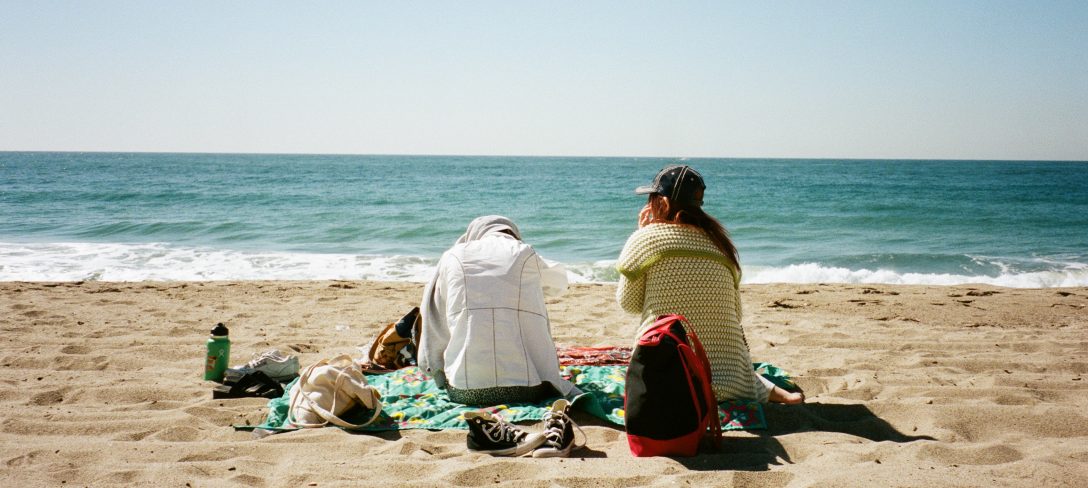“Whenever we read an Armenian news story or hear of an Armenian who’s reached the highest echelons of success, let us not dismiss each report with a glance and flip of the page. Let us think of what has brought these people into the news. Let us imagine their lives, their sorrows, their happiness, and their identity as humans and Armenians alike.”
– KARMUN KHOO in The Armenite article: “Learning Armenian: The Art of Telling An Armenian Story”
Armenians have a hidden, rich, and dense history within American society and culture. Whether that be due to dispersion from the 1915 Armenian Genocide or through immigration to the US in hopes of achieving the American Dream, Armenians are everywhere. Like many other Caucasus regions and Middle Eastern ethnicities, Armenians have gravitated towards Los Angeles and New York in hopes of accelerating in vast and robust cities, an escape from the homeland due to ethnic cleansing, poor politics, and leadership, and hopes for a better life for their families. America has always been the ideal place to thrive, idolize, follow dreams, adapt quickly, and call home. Like America, we value storytelling deeply. Armenian culture is always present and translated into storytelling, as it becomes one of the best ways to preserve and remember a culture—a fear Armenians have. The only way to contain a story in storytelling is to keep it in our minds and translate it visually within film.
A Glimpse of America heavily relies on the entertainment being produced. As American entertainment became the backbone for media and that glimpse of American culture either overseas or within the country, entertainment exists and thrives here in the US. Therefore, like any other powerful and seemingly relevant culture, it immensely impacts the media and communication. So, how a group of people are portrayed is implicitly understood as true. This video is meant to shed light on how Armenian representation within American media is unjust and inaccurately portrayed—often depicted through stereotypical and two-dimensional characters. We have become a part of a trend of ethnicity that is often associated with weird, vile, and degrading labels within the media. According to the UCLA Hollywood Diversity Report, show creators that are of MENA background are low:
“In digital, show creators’ race/ethnicity breaks down as follows for the 2021-22 season: Asian (3.55 percent), Black (12.26 percent), Latinx (2.90 percent), MENA (1.29 percent), multiracial (4.84 percent), Native (0.65 percent), and White (74.52 percent). Of the nine Latinx show creators, one was Black Latinx. Of the eleven Asian show creators, four were South Asian” (Rámon et al., 2023).
The report analyzes creators and leads within the industry that reflect the racial categories within each entertainment sector. Middle Eastern and North African individuals are consistently nearly invisible regarding writers, producers, and directors.
The films and television shows listed within the blog posts and edited within the video are just examples of how Hollywood utilizes “casual” racism. These negative perceptions harm our community and communities alike. Lily Torosyan, in her article for h-pem: “From blackface to ‘filthy Armenians: A commentary on Hollywood’s casual racism:” depicts the types of shows and movies that degrasse Armenians and shares her thoughts on the subject:
“As a people who have survived a genocide, we know what it is like to be betrayed by our government and to lose our human rights. And, as the descendants of these survivors, we take offense to the ways in which we are defined on screen—ways that, for example, portray us as unhygienic, deranged rapists. Simply put, racism is never “casual.” Though often touted as the world’s most effective “soft power” tool, Hollywood perhaps earns too much credit for simply wielding the tides of public sentiment and established values of the time. In the early 20th century, Armenian Americans fought tooth and nail for acceptance as a viable minority group, overcoming racist policies that sought to exclude them from society at large. The films and shows in this article are inevitable products of the historically negative perceptions of Armenians in American society” (Torosyan, 2019).
Armenians are a testimony of the resiliency of the human spirit. The constant struggle of fear from ethnic cleansing to not being taken seriously in American society and especially within wide recognition within entertainment we feel invisible.
As someone who loves films and television, this lack that I have noticed drove me to make this statement video. From my previous experience of working on entertainment projects and my time as a college student, I was encouraged to develop profound content for our community while learning the discipline and passion it takes to execute such tasks. I aimed to share and stress our culture’s beauty while highlighting and bringing awareness to members of the Armenian community, who are often dismissed due to traditional norms.
It brought me to understand the reasoning as to why we need to improve in the industry. To answer the question of how Armenian filmmakers can reshape our culture’s depiction in American media, Supporting Armenian filmmakers is the first step to battle this issue by watching Armenian stories made by Armenian filmmakers.
———————————————————————————————————————————————
Sources:
https://www.h-pem.com/en/analysis/2019/01/27/hollywood-casual-racism-armenian-blackface/13/
Video credits (in order):
Trevor Noah: Trump Confidently Declares Himself a “Stable Genius”: The Daily Show https://youtu.be/bbD_gKexiZw?si=48lqxEBD8SRR1vJP
Sopranos S06E08 – “Drama”
Magic Mike XXL (2015)
#BlackAF (2020) – S01E02 “because of slavery too”
American Dad! – S04E13 “Jack’s Back”
American Dad! – S09E07 “Faking Bad”
Family Guy – S15E12 “Peter’s Def Jam”
The Simpsons – S23E22 “Lisa Goes Gaga”
Chernobyl (2019)
Weeds – S06E11 “Viking Pride”
Family Guy – S11E23 “No Country Club for Old Men”
The Color of Pomegranates (1969)
Rosali (2023)
The Men (1973)
Lost & Found in Armenia (2012)
Ote, Tote, Tvanki Kote (2023)
Amerikatsi (2023)
Lengthy Night (2018)
Back to Ashtarak (2023)
Armenian Papers (2023)
Wounds of War (2023)
250KM (2023)
Parev Mama (2020)
No Thanks (2023)
Aurora’s Sunrise (2023)
Should the Wind Drop (2023)
Tevanik (2014)
Taniel (2018)
Vodka Lemon (2003)
Women in Black (2023)
Arshile Gorky Ararat Excerpts (2014)
Song – Artsakh by Ara Gevorgyan

